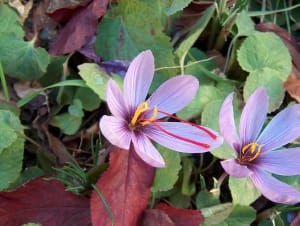Cultivation of saffron is an opportunity for Kojoor section of Mazandaran
Bahman Bali Lashkak, pointing out that the onion brought these saffrons from Tonekabon, said:
Saffron cultivation is the best way to change the cultivation pattern in Kojoor and revive the agricultural industry.
Bahman Bali-Lashkak added:
Many agricultural lands in Kojoor have been left barren and unused,
they have been sold and villas have been built in them, and this is very painful.
Pointing out that the time for planting saffron is from spring to August, this tasteful farmer from Kojori said:
Flowering and fruiting begin in late summer leading to the autumn season,
the yield of which depends on the soil of each region and low rainfall,
which in If these conditions are available, it is even possible to harvest several times.
He said that the rain in the saffron flowering season caused damage to the yield process and added:
provided that the air outside and inside the greenhouse should be from the natural air of the region and not artificial heat or cold.
And more on the issue of protecting from continuous rainfall.
Referring to the migrations that took place in the villages of Kojoor district to the cities several years ago, he added:
If there was a stable job and enough income to live on in Kojoor,
there would be no migration and today the agricultural lands would not be barren.
This tasteful farmer of Kojori said: it is not too late and it is possible to revive the barren and abandoned agricultural lands in Kojoor
by planting saffron and a new chapter of agriculture by changing the cultivation pattern and a lot of income from selling Kojoor saffron
Enter the economic and livelihood basket of rural families,
and this requires the serious determination of those in charge of agriculture to educate and encourage farmers.







Get Social